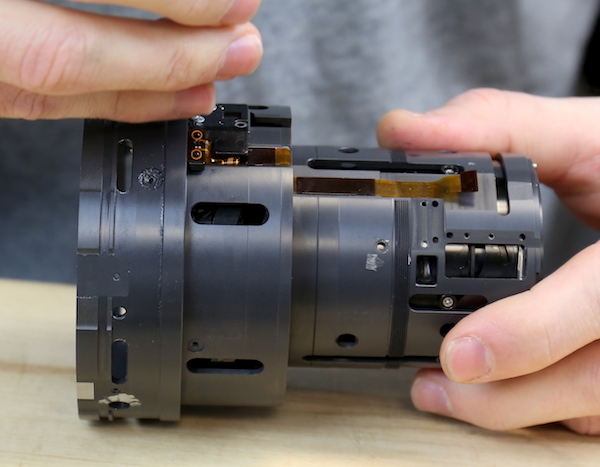The EF 800 f/5.6 L is an interesting lens. The front piece of glass is just a flat protective window and the first real element is a full diameter fluorite lens.
That's Canon's old L supertele design, I have an EF 500mm f/4.5 L USM from 1995 that was my main tele prime until this year. It has a protective front glass window, too, and I think the 2nd optical element is a fluorite glass lens. I loved this quite handy lens and never missed IS - or only when doing video from a tripod in windy conditions, because its long hood then caused small but visible vibrations. But now, after 30 years of heavy use (I bought it used about 15 years ago) its mount is worn off - otherwise it still works (it survived quite a lot heavy accidents and severe wether conditions in the wilderness). So I took this year a plunge and bought a used EF 600mm f/4.0 III lens. That was of course an upgrade worth the investment. In particular, the 1st gen. USM drive was quite slow compared with modern superteles - but I was so used to the vintage 500 that I could catch good shots with it, even paired with Canon's 1.4x III TC. Here is one with 700mm, purple herons are of course an easy target, but this one was flying nearly towards me (but the 5D IV's AF system was good enough to catch the bird sharply, image slightly cropped):

I think the 800 compares petty equally to the 600 II and 600 III at similar focal lengths. In theory, it will have slightly less resolving power than the 600s due to having a slightly smaller objective. 600/4 = 150mm. 800/5.6 = 142.9mm and that is not a huge difference, but maybe enough to be noticeably by some. They guy I bought the 800 from also had an EF 600 II and he thought it was slightly sharper with extenders.
Looking at the (theoretical) MTF charts, the EF 600 II is in the center slightly sharper (if you get a well-centered copy) than the 600 III (see e.g. Bryan Carnathan's very thorough review:
https://www.canonrumors.com/forum/t...e-a-design-weakness.44456/page-6#post-1026367). I read somewhere that the 600 II and III + Canon's 1.4x TC III or the new RF TC also beat the 800/5.6 in sharpness @ f = 5.6. But I guess that in real life the difference wouldn't barely be noticeable, since the 800 features a modern lens design, too, and supertele shooting is much more impaired by atmospheric conditions than by optical limits today. Do you have a backpack in which that beast of lens fits? I guess Lowe's Lens Trekker III would swallow it... or do you use it only in a car or tear it behind you on a trolley?
The main advantage of the EF III/RF teles is the change in design that moves the fluorite elements further back in the lens so they are much smaller. They are lighter and better balanced from a user perspective, but also very likely much cheaper to manufacture, albeit that is not reflected in the price

,
For me it was a no brainer to prefer the 600 III over the II, because the about 800 g less weight and better balanced mass distribution over the length of the lens is much more important for me. I shoot such lenses mostly free hand, and 3 kg (+ camera) is a weight I still can handle when shooting BIF for a while, even with the quite light 1.4x TC added it is still quite light. Compared to the vintage 500/4.5, I had to get used to the much wider diameter of the 600, but thanks to Canon's latest design it is much less front-heavy than the old lens. I am not sure whether the production of the 600 III is so much cheaper than of the generations before: the expensive fluorite elements are much smaller, that's true, but the new design required an innovative extremely thin super UD element and an extremely big aperture (see Bryan Carnathan's review). Btw: Sony basically copied Canon's latest design in its current 600mm f/4 and achieved 10 (or so) g less weight for market their lens as the lightest 600/4 on the market, Nikon fell behind with their still 3.8 kg and more front-heavy 600/4 f mount - but they came up with their gorgeous light 600/6.3 for their Z mount, very smart.
Since I prefer to shoot hand-held, the EF 800mm f/5.6 would be too heavy with 4.5 kg, plus being able to start with 600mm and therefore a less narrow field of view for BIF my lens serves me better, but that's a matter of personal preferences. I am pretty sure: on a sturdy tripod your 800 can deliver beautiful images! In fact, if I once would have the opportunity to test that legendary lens, I'd be happy to do that!
Sorry for this long reply, and have always good light!



